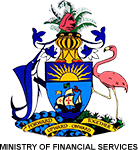Water Management in Latin America’s Most Dense Cities: The São Paulo Experience
24 Oct 2017
Challenge Since the beginning of the twenty-first century, as in most metropolitan urban areas in Brazil, the São Paulo Metropolitan Region has faced growing water demand-supply gaps, affecting the city’s economic growth and social and environmental sustainability. The São Paulo State’s main priority was to protect its headwaters, the source of half of the city’s potable water. Improving the institutional environment and capacity were crucial for adequate metropolitan water management and coordination, including the key challenges of water resources management, water pollution control, land-use policy, and basic service provision. Investments in sanitation improvement were also needed to diminish the pollution load and to protect water resources. In 2014–2015, the region faced unprecedented drought, prompting the São Paulo State to undertake measures to increase short-term water supply availability and to improve medium and long-term water security. Approach Using the World Bank’s convening power, the Integrated Water Management in Metropolitan São Paulo Adaptable Program, commonly termed the Mananciais Program, promoted greater collaboration and integration among key players at three different layers of government (state, state water utility, and municipal) to improve urban water management in the São Paulo Metropolitan Region. The program was designed with multiple projects, using a horizontal adaptable program approach, and two were effectively implemented:The State of São Paulo Project (US$4 million loan) aimed at strengthening the capacity of the state to improve water resources management and water pollution control in the São Paulo Metropolitan Area. It focused on key studies and plans to support formulation of policies and development of monitoring tools.The State Water Utility (Companhia de Saneamento Básico do Estado de São Paulo, SABESP) Project (US$100 million loan) aimed at reversing the main factors contributing to the pollution of the reservoirs and providing improved water supply and sanitation services to the poor. In addressing the 2014–2015 drought water crisis in the São Paulo Metropolitan Area, the project was instrumental in financing response-to-emergency measures.
Read full article at Worldbank

